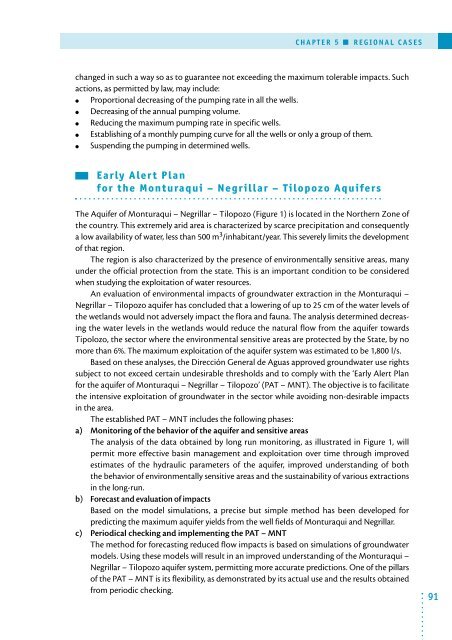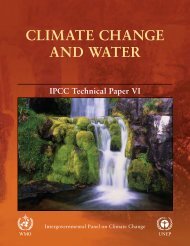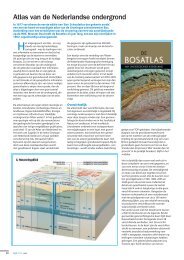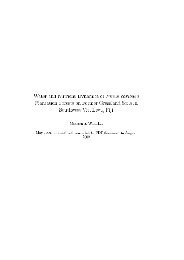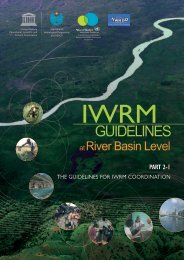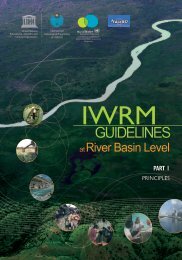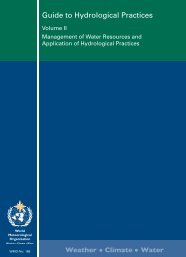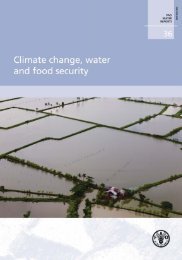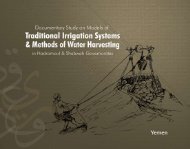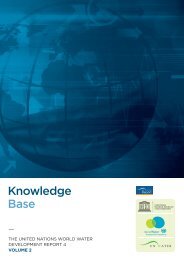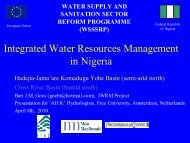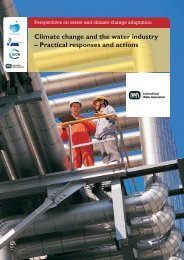Non-renewable groundwater resources: a ... - unesdoc - Unesco
Non-renewable groundwater resources: a ... - unesdoc - Unesco
Non-renewable groundwater resources: a ... - unesdoc - Unesco
- No tags were found...
You also want an ePaper? Increase the reach of your titles
YUMPU automatically turns print PDFs into web optimized ePapers that Google loves.
CHAPTER 5 ■ REGIONAL CASESchanged in such a way so as to guarantee not exceeding the maximum tolerable impacts. Suchactions, as permitted by law, may include:● Proportional decreasing of the pumping rate in all the wells.● Decreasing of the annual pumping volume.● Reducing the maximum pumping rate in specific wells.● Establishing of a monthly pumping curve for all the wells or only a group of them.● Suspending the pumping in determined wells.Early Alert Planfor the Monturaqui – Negrillar – Tilopozo AquifersThe Aquifer of Monturaqui – Negrillar – Tilopozo (Figure 1) is located in the Northern Zone ofthe country. This extremely arid area is characterized by scarce precipitation and consequentlya low availability of water, less than 500 m 3 /inhabitant/year. This severely limits the developmentof that region.The region is also characterized by the presence of environmentally sensitive areas, manyunder the official protection from the state. This is an important condition to be consideredwhen studying the exploitation of water <strong>resources</strong>.An evaluation of environmental impacts of <strong>groundwater</strong> extraction in the Monturaqui –Negrillar – Tilopozo aquifer has concluded that a lowering of up to 25 cm of the water levels ofthe wetlands would not adversely impact the flora and fauna. The analysis determined decreasingthe water levels in the wetlands would reduce the natural flow from the aquifer towardsTipolozo, the sector where the environmental sensitive areas are protected by the State, by nomore than 6%. The maximum exploitation of the aquifer system was estimated to be 1,800 l/s.Based on these analyses, the Dirección General de Aguas approved <strong>groundwater</strong> use rightssubject to not exceed certain undesirable thresholds and to comply with the ‘Early Alert Planfor the aquifer of Monturaqui – Negrillar – Tilopozo’ (PAT – MNT). The objective is to facilitatethe intensive exploitation of <strong>groundwater</strong> in the sector while avoiding non-desirable impactsin the area.The established PAT – MNT includes the following phases:a) Monitoring of the behavior of the aquifer and sensitive areasThe analysis of the data obtained by long run monitoring, as illustrated in Figure 1, willpermit more effective basin management and exploitation over time through improvedestimates of the hydraulic parameters of the aquifer, improved understanding of boththe behavior of environmentally sensitive areas and the sustainability of various extractionsin the long-run.b) Forecast and evaluation of impactsBased on the model simulations, a precise but simple method has been developed forpredicting the maximum aquifer yields from the well fields of Monturaqui and Negrillar.c) Periodical checking and implementing the PAT – MNTThe method for forecasting reduced flow impacts is based on simulations of <strong>groundwater</strong>models. Using these models will result in an improved understanding of the Monturaqui –Negrillar – Tilopozo aquifer system, permitting more accurate predictions. One of the pillarsof the PAT – MNT is its flexibility, as demonstrated by its actual use and the results obtainedfrom periodic checking.91


